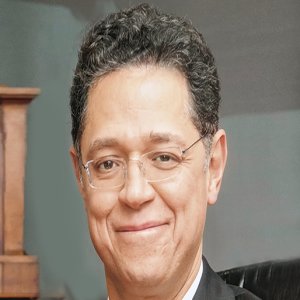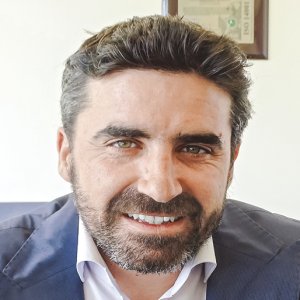Full Reform Benefits to Materialize in Coming Years

STORY INLINE POST
Q: How will the Energy Reform impact Mexico’s growth and that of the energy sector?
A: The reform will be very important for Mexico’s development and growth. It had been necessary for over 20 years. It is also important to understand the complexity of its implementation. The Energy Reform required constitutional changes and the creation of many secondary laws and regulatory institutions. We will see the full benefits in the years to come.
To date, one-third of the power produced in Mexico comes from private IPPs that sell energy to CFE under long-term PPAs. Mexico has around 68GW capacity and the long-term plan is to have around 110GW by 2030. This increase considers the full implementation of the Energy Reform.
Q: What are the key areas of participation for SMBC in the energy industry?
A: Over the last few years SMBC has been actively financing projects in different sectors in Mexico. Our participation in the energy industry involves mainly advisory, structuring and financing of projects through various plans. We are the second-largest bank in Japan by market capitalization and our presence spans approximately 45 countries. The bank has extensive experience in project finance all over the world and we leverage this expertise when we participate in energy projects here.
SMBC has been named global bank of the year for project finance in recent years, not only for the number of deals closed but also for their complexity and innovation. In Mexico we have been one of the most active banks in this area, working closely with development lenders such as Banobras, NAFINSA and Bancomext, as well as commercial banks that are active here. SMBC recognizes the opportunity the Energy Reform presents and will continue to support energy projects resulting from it.
Q: Where do you see the greatest opportunities for financing in Mexico?
A: We see a big opportunity in infrastructure and energy. Specifically in energy, during the first electricity auction the government invited international companies to present bids and we saw a great deal of interest. Over 100 companies entered into the prequalification process and 69 were approved, submitting some 227 offers. Finally, 18 offers were assigned to 11 companies. For the first auction SMBC submitted around 20 indicative term sheets to interested companies, indicating how the bank would be willing to finance projects. The awarded projects represent 2.1GW of additional capacity and an investment of US$2.6 billion, although around 50 percent of the energy auctioned was awarded to Enel Green Power and ACCIONA Energía, which normally do not require project financing. There is still a large amount that will require financing from development and commercial banks.
In the second auction, 23 companies presented 56 proposals and 18 companies got their projects awarded. The investment expected in the second auction is about US$4 billion and the majority of the projects will require project financing. We submitted indicative term sheets to most of the bidders for the second electricity auction.
Q: What are the most common financing structures used in Mexico and how does the bank mitigate risk?
A: There are several structures that can be used for these projects but the most common so far are long- term project financing, dual tranche structures with long-term lending from development banks and medium-term lending from commercial banks along with maxi-perm/mini-perm structures that incorporate a refinancing risk.
Risks are mitigated with proper due diligence and sound financing structures. We also retain independent engineers to assess and verify independently the technical specifications of a project and its feasibility to achieve the desired power-generation output. Extensive studies on the potential locations are also required to minimize any social risk. Also, reputable and well-known law firms are needed to structure the projects and the financing mechanisms required. For a project to succeed there has to be a high level of confidence in the sponsors because project finance involves a high construction risk, which can be reduced by the experience of the company developing similar projects.
Q: How does the bank’s international experience come into play when dealing with risk?
A: The risks involved in financing these projects resulting from the Energy Reform are similar to other projects we have financed in other latitudes where electricity markets have opened. In Chile we were one of the first banks to finance projects when the electricity market opened, financing US$366 million for a wind farm project called San Juan, with a capacity of 185MW. We are bringing this expertise to our projects in Mexico. We always have to conduct a proper analysis and due diligence to develop financial structures that adequately mitigate identified risks.
In Mexico, SMBC has been quite active in the power sector, financing several projects under the IPP scheme and we have a mandate to finance renewable projects that were awarded during the electricity auctions. The opening of the electricity market has followed best practices from other markets that have experienced similar processes over the last few years such as Chile.
SMBC is also part of the infrastructure committee of the Mexican Banking Association (ABM), which has allowed us to discuss and analyze in great detail financing alternatives to participate in the opening of the electricity market. With Mexico’s need to increase its megawatt capacity around 61 percent over the next few years, there will be significant demand for project finance, not only for power projects but also to develop and strengthen the natural gas pipeline system to supply fuel for some of the plants expected to be built. SMBC has successfully participated in most of the pipeline projects in Mexico and the US (with CFE off-taker risk) during the last few years.
Q: What investment opportunities do you see in transmission and distribution?
A: The average growth of Mexico’s GDP for the last 10 years has been around 2.5 percent but the growth rate of the electricity market as a percentage of GDP over the same period is around 5 percent. The power industry represents 1.8 percent of GDP, which makes it extremely important for the country’s economic development. All the northern and central parts of Mexico will continue to see this industry growth but to succeed there has to be a coordinated effort from all segments of the sector. Everything has to go hand in hand.
In the past, transmission projects were tendered to private companies through public works contracts (turn-key projects), where the companies were responsible for the financing and construction and then the projects were paid by CFE at completion (in a lump-sum payment). With the Energy Reform CFE is looking to tender large transmission- line projects for over US$1 billion under a new Build- Operate-Transfer (BOT) scheme, with a 25-year contract. Mexico is offering great opportunities for investment.
Q: What are SMBC’s ambitions in the power sector?
A: We are looking to maintain an active participation in Mexico, trying to enter projects in their early stages of development and acting as financial advisers where appropriate. We also seek to collaborate with other financial institutions, since energy projects require large investments and different funding sources. SMBC has the advantage of being recognized worldwide as one of the top project finance banks and we can really bring value to all participants in the market in Mexico. We need to be vigilant over the market’s evolution but we trust SMBC’s role will remain highly significant.
In Mexico there are few banks as active as SMBC in financing projects because not everyone understands the market or is comfortable with the risks. In the future, however, we expect to see a combination of commercial and development banks and export trading agencies supporting energy projects here. We also believe the capital market will play a financing role under the Energy Reform.
























